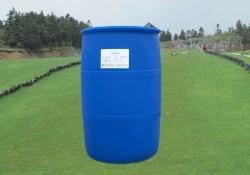In recent years, the anaerobic fermentation of food waste to produce volatile fatty acids (VFA) has been widely studied. Hydrolysis is the rate limiting step of anaerobic fermentation of food waste. The effect of the dosage of APG on the dry anaerobic fermentation of food waste was investigated, and the mechanism of APG on the anaerobic fermentation of food waste was analyzed. The results showed that the optimum dosage of APG was 0.5g/l, and the accumulation of VFA was 18.5g/l, and the conversion of VFA was 38%; APG can strengthen the hydrolysis reaction of kitchen waste, significantly increase the content of soluble protein and soluble polysaccharide, and provide more fermentation substrates for subsequent acid producing bacteria. The decomposition of APG itself contributes to VFA to a certain extent, but the contribution is far less than the production of kitchen waste.

With the extension of anaerobic fermentation time, both soluble protein and soluble polysaccharide increased first and then decreased. When the anaerobic fermentation time was 3 days, the mass concentrations of soluble protein and soluble polysaccharide in the blank group were (698 ± 16) and (6528 ± 120) mg / L, respectively. When the dosage of APG was 0.5g/l, the mass concentrations of soluble protein and polysaccharide were (1325 ± 27) and (9150 ± 110) mg / L, respectively, which were 1.90 and 1.40 times that of the blank group. It can be seen that when APG is present in the anaerobic fermentation reactor, the content of soluble protein and soluble polysaccharide in kitchen waste increases significantly, providing more fermentation substrates for the subsequent acid producing bacteria, and thus generating more VFA.
(1) Biosurfactant APG can effectively enhance the production of VFA by dry anaerobic fermentation of kitchen waste. The optimal dosage of APG is 0.5g/l, at which time the large accumulation of VFA is 18.5g/l, and the VFA conversion rate is 38%.
(2) The VFA produced by APG enhanced anaerobic fermentation of kitchen waste has a high proportion of acetic acid, followed by propionic acid. The obtained VFA can be used as a carbon source for biological nitrogen and phosphorus removal of sewage.
(3) APG can strengthen the hydrolysis reaction of kitchen waste, significantly increase the content of soluble protein and soluble polysaccharide, provide more fermentation substrates for subsequent acid producing bacteria, and limit the production of methane to accumulate more VFA.